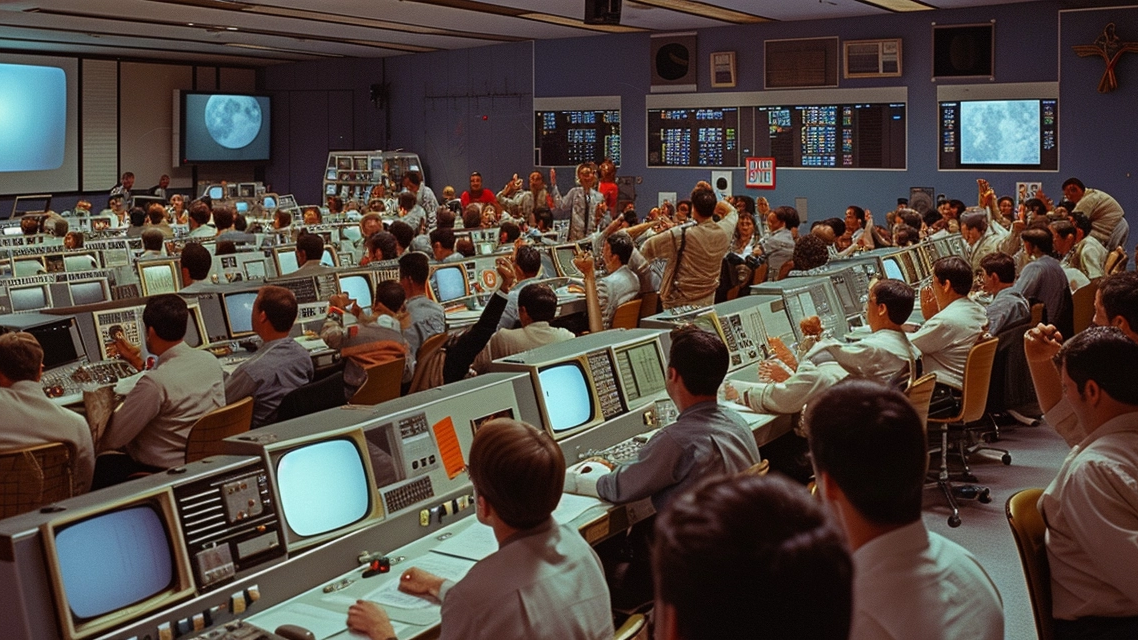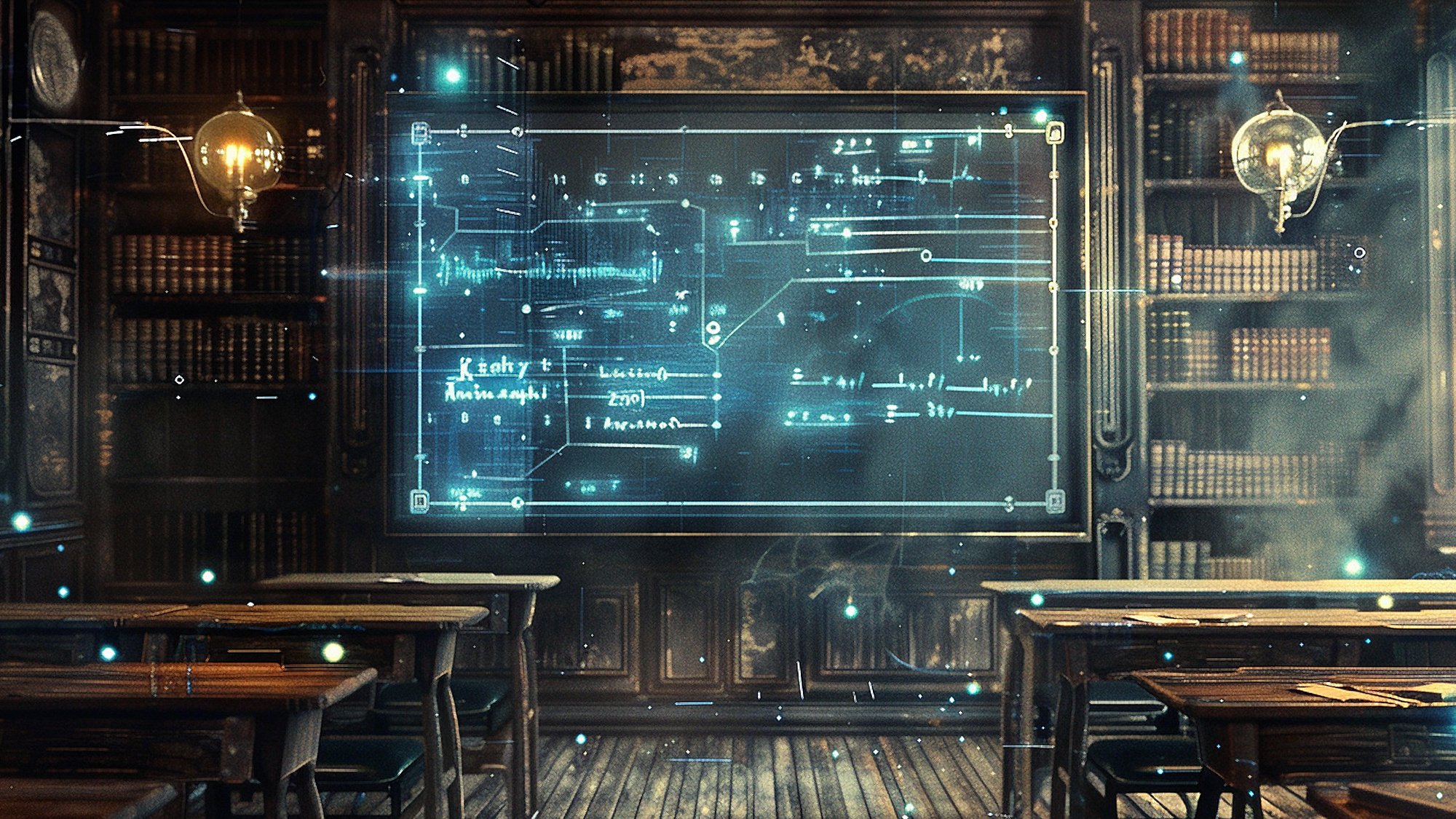Goodbye Mr. Chips The future of AI and education

By Calum Chace
16.04.2024

The 1930s award-winning Hollywood classic 'Goodbye Mr Chips' is based around the heart-warming story of a Latin master who develops a profound connection with his students. But, as technology’s influence on education increases, how will AI change our approach to learning and what effect will that have on the future generation’s formative teacher-pupil relationships?
Artificial intelligence is our most powerful technology. It will transform everything about our lives: how we work, how we play, how we think, how we raise our children, how we grow old.
One of the areas where artificial intelligence will have the biggest impact will be education. This is partly because learning is so important, and also because globally, our current provision often leaves a lot to be desired.
To understand why AI is so important, we must first understand what AI is. It comprises two concepts: "artificial", and "intelligence". The artificial bit is easy: it means an entity created by humans or aliens, not by evolution or a god.
Like anything to do with the human brain, intelligence is complex and mysterious. Fortunately there is a four-word definition which suits our present needs: “goal-directed, adaptive behaviour”. So an AI is a man-made thing (usually software) which learns as it pursues a goal.

The science of AI officially got started in 1956, at a conference in Dartmouth, in New Hampshire. But things only got really interesting after 2012, the year of the first Big Bang in AI. This is when a team of researchers led by Geoff Hinton figured out how to apply a branch of statistics called machine learning to AI. In particular, they revived an early type of AI called neural networks to create a technique called deep learning.
Deep learning algorithms use several layers of processing, each taking data from previous layers and passing an output up to the next layer. Each layer extracts higher-level features than its predecessor. For example, in image processing, lower layers identify edges, while higher layers identify the concepts relevant to a human, such as digits or letters or faces.
It is an over-simplification to say that deep learning works in a similar way to the human brain. It is not an over-simplification to say that deep learning systems learn, and they can be creative.
Deep learning systems gave us new services which are frankly miraculous. Google Search plus Wikipedia gives us something close to omniscience. Intelligent maps tell us which route to take and when we will arrive. AI systems are discovering new drugs, deciphering ancient languages, and improving the efficiency of supply chains. DeepMind (now Google DeepMind) became the undisputed champion of these systems in 2016 when its AlphaGo system beat the world’s best player of the board game Go, a feat that had not been expected for another decade.
There was a second Big Bang in AI in 2017, when some Google researchers published a paper called “Attention is all you need”. This introduced transformer AIs, and so-called Large Language Models (LLMs) like GPT-4 for text output and Dall-E for image output. OpenAI, led by Sam Altman, has set the pace for these models, and they recently demonstrated Sora, a model which produces photo-realistic video from short text instructions.
It is important to note that today’s AI is narrow AI. We are still some way off creating an AI which has all the cognitive abilities of an adult human, which is known as Artificial General Intelligence, or AGI. When the first AGI does arrive, it will quickly become a superintelligence – an AI that is smarter than a human. That will be the most important moment in human history - bar none. Sam Altman thinks this could happen by the end of this decade. Demis Hassabis, who leads Google DeepMind, agrees.
What has made these impressive achievements possible is the exponential growth in the power of our computers. You may have heard that the phone in your pocket has more compute power than NASA had at its disposal when they sent Neil Armstrong to the moon. Which is true, but it’s out of date. A good toaster now has more compute power than NASA had when they sent Neil Armstrong to the moon.

This exponential growth in the power of our computers is not stopping. If anything, it is actually speeding up. For many decades, computers have been getting twice as powerful every 18 months or so, and this is known as Moore’s Law, after Intel co-founder Gordon Moore. You will hear people say that Moore’s Law is dead or dying, but it’s not true. It is evolving, as it always has. Computers, and hence AI, are going to continue their exponential improvement for many years to come. There is plenty more Moore.
Exponential growth is astonishingly powerful. Imagine walking 30 steps – you would get about 30 metres. Now imagine that you could walk 30 exponential steps, so your first step is one metre, your second is two, your third is four and your fourth step is eight metres and so on. How far would 30 exponential steps take you? They would take you to the moon and back.
The way that breaks down is interesting: your 29th step would take you to the moon, and your 30th step would bring you all the way back. In exponential growth, each step is equal to the sum of everything that has gone before.
Exponential progress curves cannot continue forever: they turn into S-curves eventually. As the saying goes, "the trend is your friend until the bend at the end." But this one can go on for many years yet. If this is right, the machines we have in ten years time will be more then 100 times as powerful as the ones we have today. In 20 years, they will be 10,000 times more powerful, and in 30 years they will be a million times more powerful. On an exponential growth curve, you are always at the beginning of the journey. Despite the astonishing advances we have seen already, we are only at the beginning of our digital journey.
As I said at the start, education will be one of the areas of life where artificial intelligence will have the biggest impact - partly because learning is so important, and also because our current provision often leaves a lot to be desired.

Classrooms today would be recognisable to the Victorians who invented them. A few decades from now we may look back on this period as the final years of the pedagogical dark ages. Some would even say that schools today are abusive: sitting still and quiet in military ranks for hours at a time is the absolute opposite of what children are hard-wired to do. As Donald Clark, co-founder of Epic Group says, “Education is a bit of a slow learner.”
This is not generally the fault of teachers. They are the active ingredient in today’s education system, but they are expensive, and not scalable. Which is unfortunate, because we expect them to scale. We expect them to educate 30 students at a time. To educate a student you need to inspire them, and it's not easy to inspire 30 students at the same time. Think back to your own schooldays. How many of your teachers were positively inspirational? If it was as many as 10% you were lucky.
A number of tools are already available to improve the situation. With flipped lessons, students watch a video of a lecture for homework (and there is no reason why it can’t be the best such lecture ever given on the subject), and then put what they have been told into practice in the classroom. The teacher acts as coach and mentor, a more interactive role than lecturing.
Mastery learning, or competency-based learning, requires students to have mastered a skill or a lesson before they move on to the next one; students within a class may progress at different speeds, and your educational stage is not rigidly determined by your age. As Sal Khan, the founder of Khan Academy, points out, this means that everyone should get an ‘A’.
We could also be doing more to gamify the learning process, and to turbocharge it by having learners teach each other and learn from each other. Every good teacher knows that peer-to-peer learning is remarkably powerful.
But all this will pale into insignificance compared with the impact of AI. AI will make past improvements in pedagogy look like rounding errors.
In the near term, bots (software robots) will take over an increasing range of education-related activities, including the recruitment of students, onboarding them in schools and universities, reminding and cajoling them to submit coursework, assessing some of their work, and even providing a certain amount of Socratic tuition.
A few years ago, IBM built a teaching assistant chatbot named Jill Watson. Students at Georgia Tech, a computing college, were guinea pigs in an experiment to see whether they would notice that one of their nine teaching assistants was a robot. Interestingly, when they finally twigged that “she” was too efficient to be human, they were not annoyed. Instead, they recommended “her” for a teaching award.
Jill Watson was a digital assistant, and many of us have had access to primitive versions of these for some time already, in the form of Siri, Alexa, Cortana and Google Assistant. These systems were pretty dumb. They could answer a simple question, but they couldn’t sustain a conversation.
Large language models have changed that. They are digital assistants that you can have conversations with, and give fairly complicated cognitive tasks to, like drafting emails and reports, summarising articles and books, and writing computer code.
Companies are starting to use LLMs to build personal teaching assistants. These assistants will have an encyclopaedic knowledge of the curriculum we need to master, and they will understand better than we do which approach to learning suits us best, which times of day we are most receptive, and which times we are best left to relax or rest.
Eventually we will all be like Alexander the Great, who had the good fortune to have Aristotle as his personal tutor for a few years. The education that young people receive then will be dramatically better than even the best-funded schools today can provide. And this kind of education will be available to everyone.
When will all this happen? At this point we need to bring in an American scientist called Roy Amara. There’s a law named after Roy which says that we usually overestimate the short-term impact of new technologies, and under-estimate their long-term impact.
Whenever a new technology is introduced, we think its impact will be immediate. We forget about the time it takes for everyone to have a cup of coffee, learn about the technology, have another cup of coffee, and gradually figure out how to take advantage of it. By the time the adoption gets started, we’ve all got bored and we’re dismissing it as hype. So we’re not paying attention any more when the dramatic effects of the exponential growth kick in. Unfortunately we never know how long the long term is. Sometimes it is five years. Sometimes it is fifteen years, or even longer.
That's the near term. Looking further ahead, thanks to AI, education will be less regimented, more flexible, and much more closely tailored to our individual preferences and needs. Above all, it will be more fun.
One of the reasons this will happen is virtual reality and augmented reality. It will be much more compelling to learn about Napoleon by wandering around inside a 3D simulation of the battle of Waterloo, rather than by reading about it, or listening to a lecturer describe it. It will be much easier for a teacher to explain the molecular structure of alcohol by escorting her pupils around a VR model of it.
Perhaps the greatest gift that AI will bring to learning is personalisation. Really advanced digital assistants will be both tutors and companions - and they find you just as endlessly fascinating as you find yourself.
Unfortunately, none of this will make learning trivially easy. Until we have advanced brain-computer interfaces, we won’t be able to simply upload knowledge and skills into our minds, like Neo learning Kung Fu in the Matrix.
I'll finish by looking at a development that you read about all the time, but whose enormous implications for education are rarely considered: robots taking our jobs.
Unless we stop developing smarter and smarter machines, then it is pretty much inevitable that machines will take all our jobs. That's because machines will be able to do pretty much everything that humans can do for money, cheaper, better and faster than humans can.
A lot of people are in denial about this, but that's mostly because they are not taking the impact of exponential growth seriously. This is potentially dangerous complacency. It is also pessimistic. A world in which machines do all the jobs could be a world in which humans do whatever they want to: learning, playing, exploring, socialising, creating, having fun. We could have a second Renaissance.
Of course this raises a lot of questions and a lot of challenges. I have explored them in detail in my book, The Economic Singularity, in which I propose an economic system that I call Fully Automated Luxury Capitalism. In this system, education will become even more important than it is today. Instead of viewing education largely as a route into the world of work, we will view it as a way to make the most of life in general. Which is of course what most educators want it to be already.
So maybe in the future, when you meet someone at a party, instead of asking what they do for a living, you will ask them what they are learning. Education, in this world, will change from being “vocational” to being “vacational”.